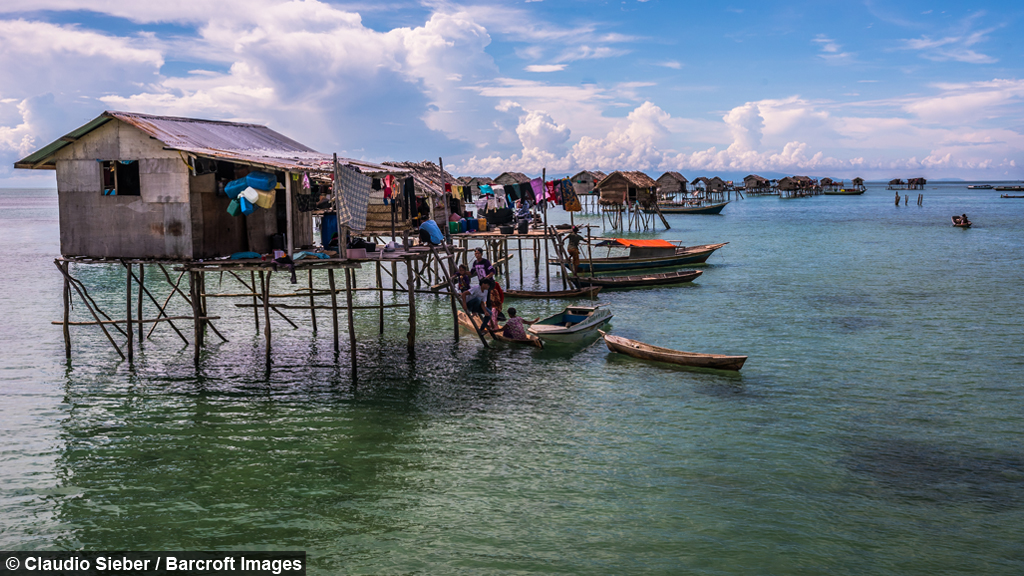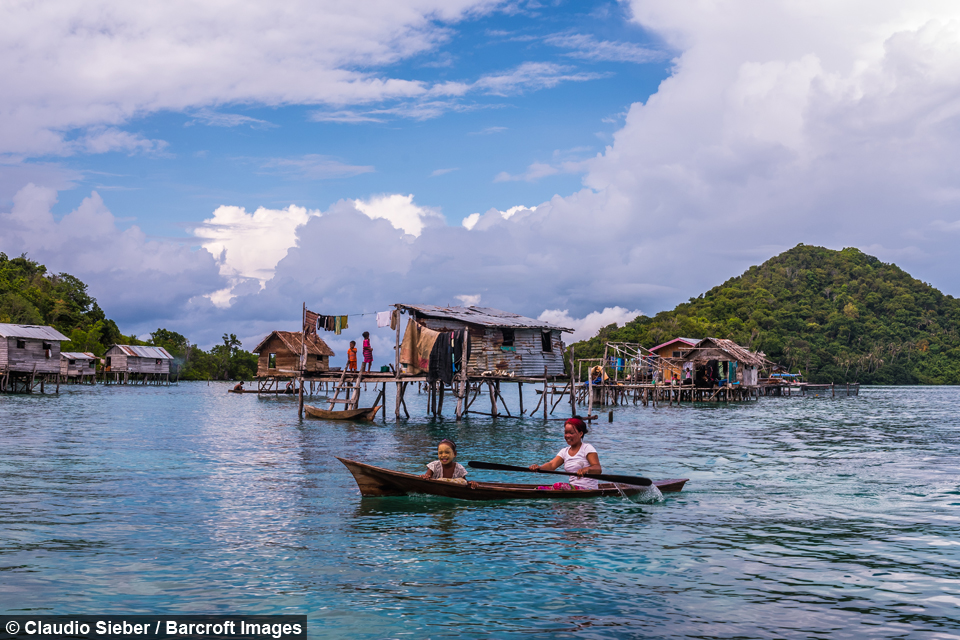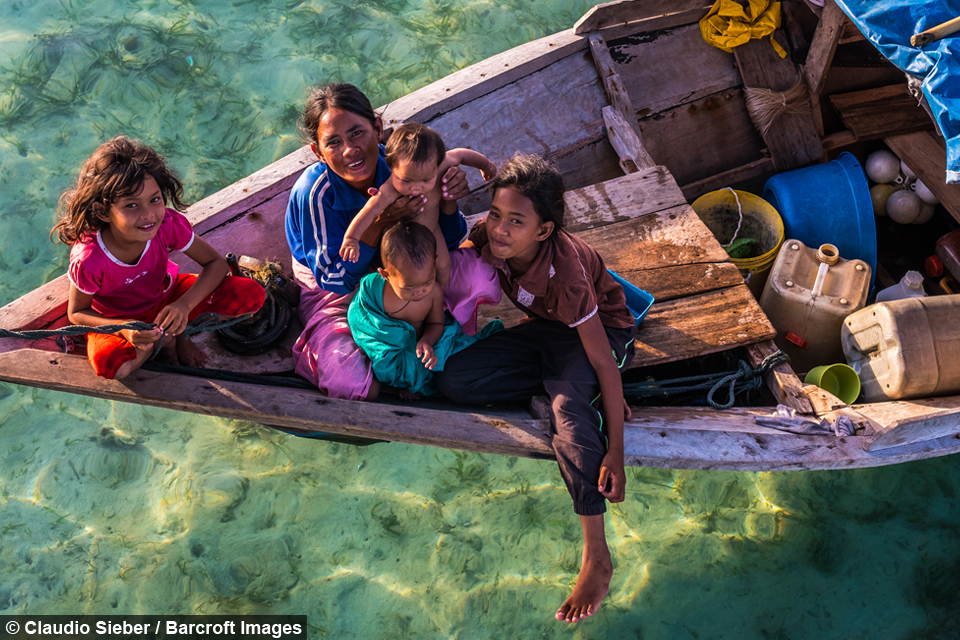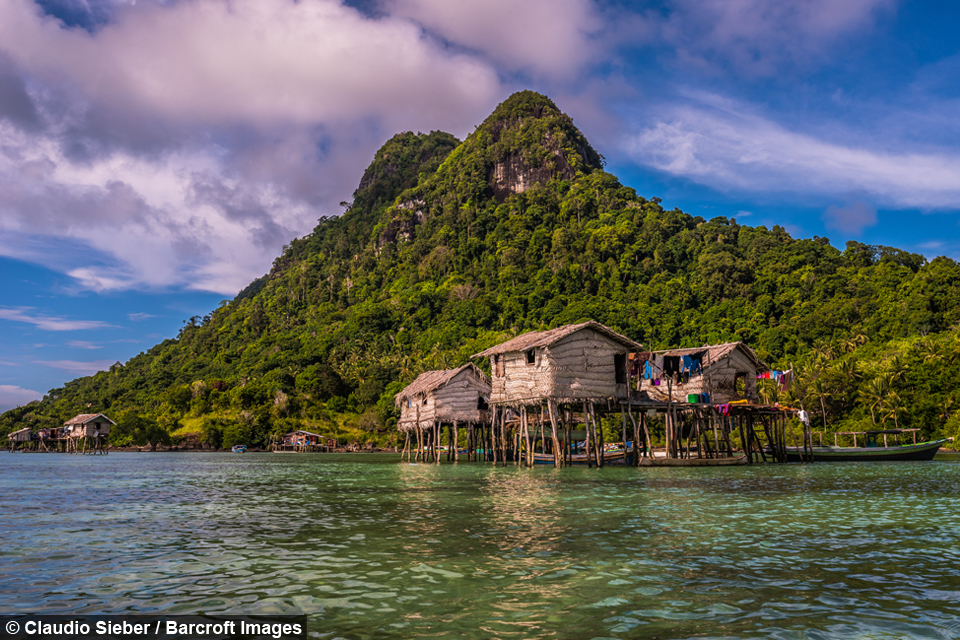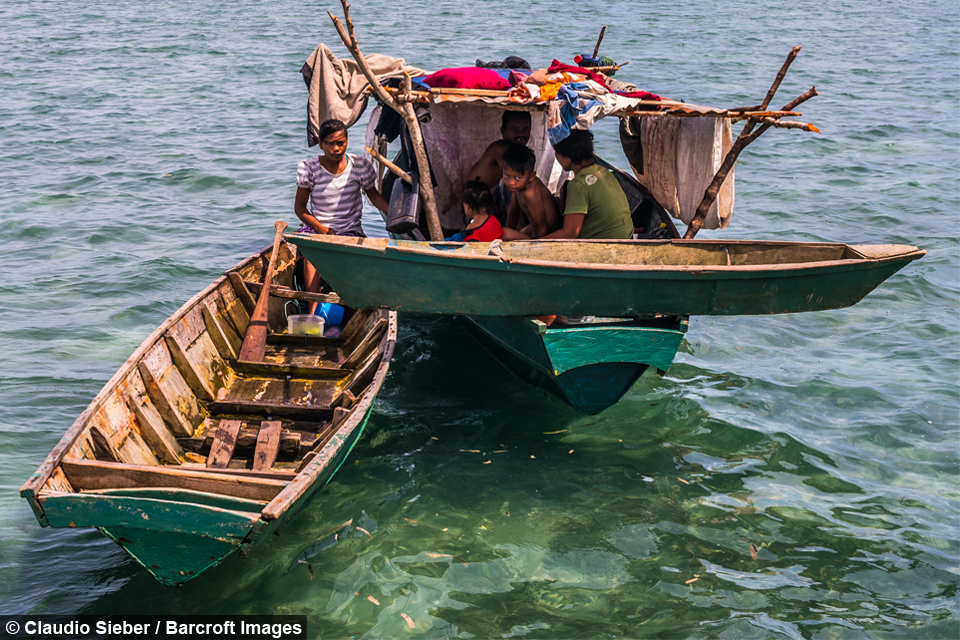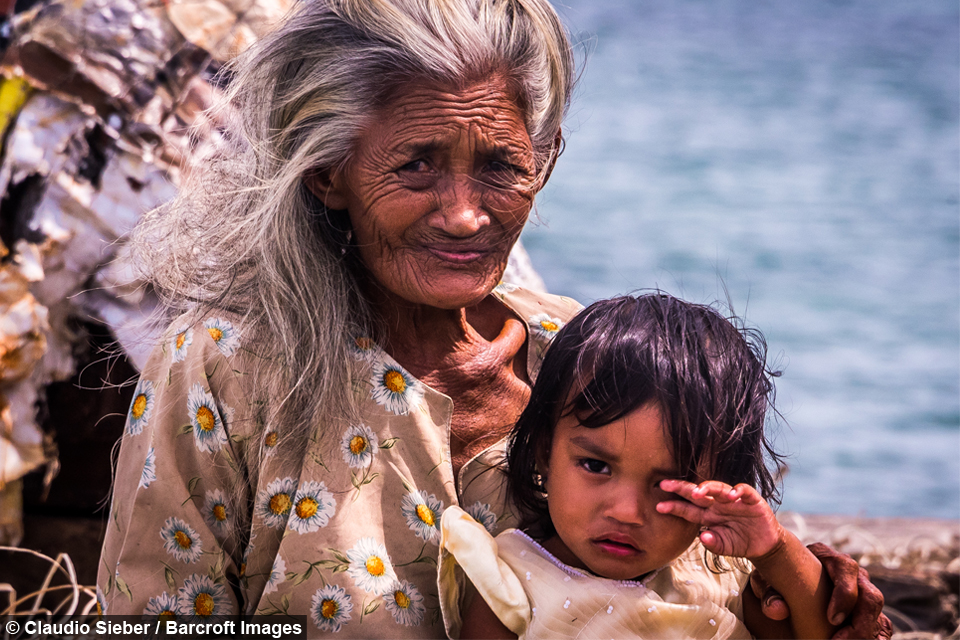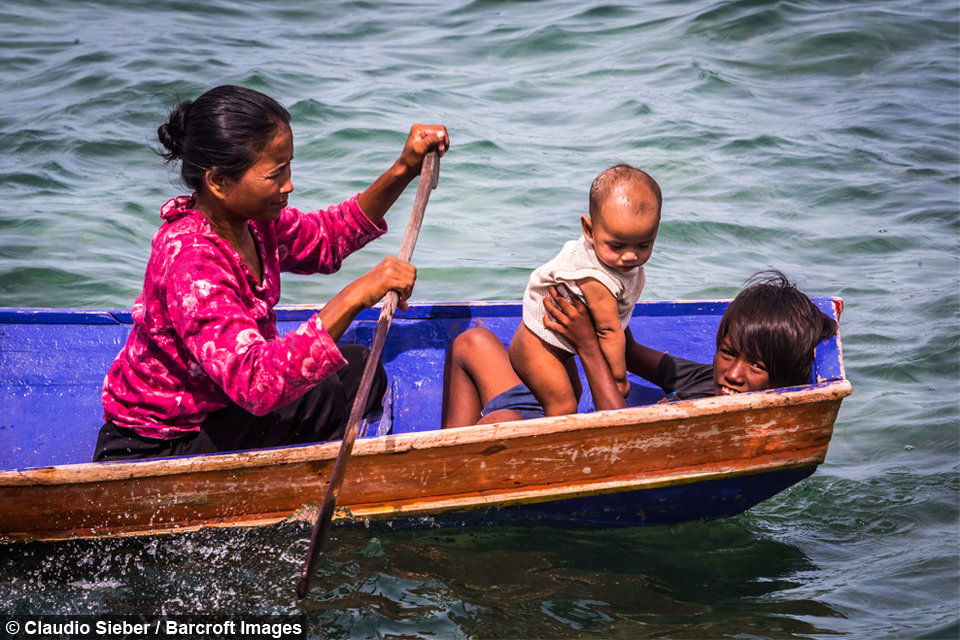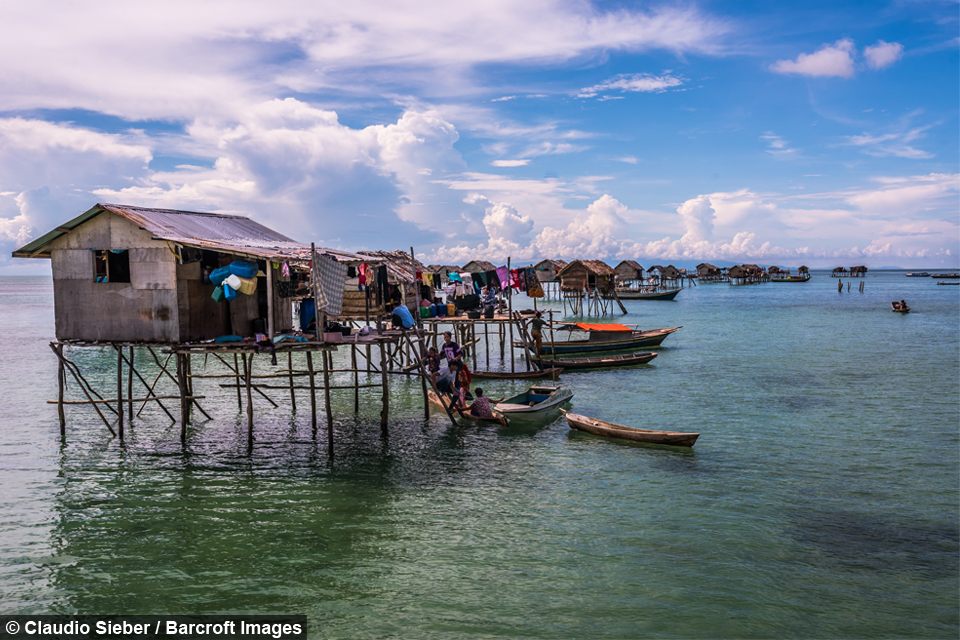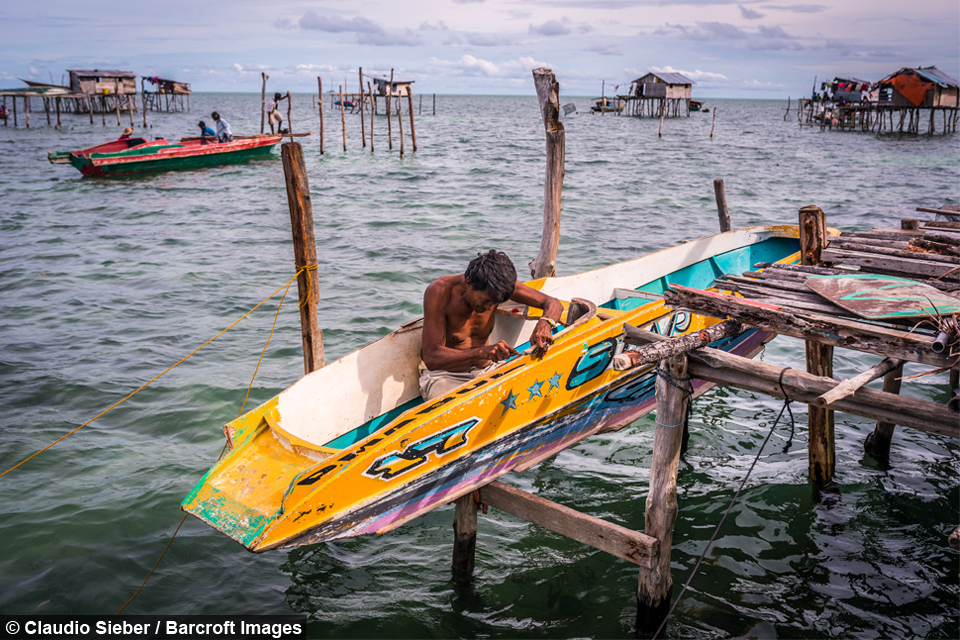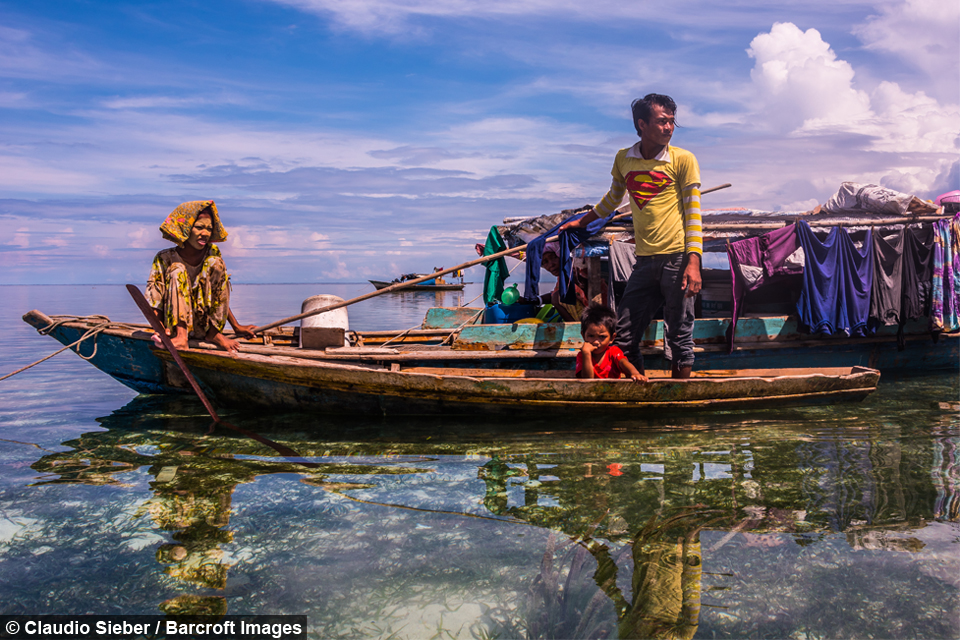Explore Malaysia's isolated communities who live in stilt houses and live off the ocean
By Hannah Stevens @Hannahshewans
Scroll down for the full story
In June, nomadic photographer Claudio Sieber visited communities of Bajau people near the city of Semporna, Malaysia, including the Sea Bajau, who live on houseboats, and the Bajau who reside in stilt houses.
The Bajau encompass several Austronesian ethnic ethnic groups of Southeast Asia and originate from the Philippines. Many left to settle in Malaysia during conflict between the Philippine government and Moro Muslim rebel groups.
Sieber said: “For some of us kicking back in a stilted chalet by the sea are picture-perfect holidays, but for the Bajau living on the water is just daily routine.
“The Bajau live with a sparse set up on their handmade houseboats - called lepa lepa. Just essentials are needed, like fishing and cooking gear and one outfit for each family member.”
Due to their refugee status, the Bajau are unable to settle ashore because they still do not have citizenship, which prevents their children from accessing Malaysian schools on the mainland.
The Sea Bajau will leave their community of houseboats to trade their extra seafood to nearby islands before returning to prepare the evening meal as a community.
The 35-year-old photographer said: “Living in marine homes above shallow waters, the Bajau gather in off-shore communities which rely solely on the ocean.
“Most of the time it was fascinating to realise that their culture has been minimally affected by the world’s globalisation. But at times I found myself feeling quite sad to see the lack of opportunities or the poor hygiene standards.
“I asked quite often if they would like to change anything if they could. I’m aware that for someone who has never experienced anything different, this is a tough question to answer.
“But mostly the answer was ‘no.’”
Bajau children enjoy playing on the beaches or on their small wooden boats, called dugouts, but they start learning the essentials for survival in the isolated community at just eight-years-old.
The children - who have no access to state education - learn how to free dive, swim, hunt and beg from passing tourists.
While the Bajau have little access to state education, they are innovative and build all of their own stilt huts, boats and houseboats - a stilt hut to house up to 30 people can be completed in just three weeks.
The Swiss photographer added: “Most of the Bajau I spoke to have no citizenships and therefore no rights to settle ashore.
“According to local human rights activists, as well as former government officials, there is no solution in sight to grant the next Bajau generation a brighter future.
“Malaysia’s eastern state Sabah pretends not to know about the previous illegal migration and has let them settle off-shore.
“Even though a few Bajau came in via the official migration process and may earn a little money from local tourism, the great majority remains in the fishing industry, build stilt houses to park their boat nearby and face a daily challenge to survive.”
